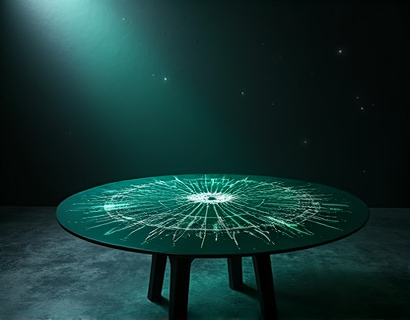Unlocking the Mysteries of the Ancient Indus: In-Depth Insights and Exclusive Heritage Merchandise
The ancient Indus Valley Civilization, one of the world's earliest urban cultures, continues to captivate historians, archaeologists, and enthusiasts alike. Spanning from around 3300 BCE to 1300 BCE, this civilization thrived in the Indus River Valley, encompassing parts of present-day Pakistan and northwestern India. Despite its significance, many aspects of this civilization remain shrouded in mystery, making it a rich field for exploration and discovery. This article delves into the latest insights from archaeological research and presents a curated selection of heritage merchandise, designed to honor and celebrate the legacy of this fascinating ancient culture.
Archaeological Discoveries and Insights
The Indus Valley Civilization is renowned for its advanced urban planning and sophisticated water management systems. One of the most significant discoveries is the layout of its cities, particularly the cities of Harappa and Mohenjo-Daro, which are often used to represent the civilization as a whole. These cities were built with a grid system, featuring straight streets and well-planned drainage systems. The advanced engineering skills of the Indus people are evident in the construction of public baths, such as the Great Bath in Mohenjo-Daro, which suggests a strong emphasis on cleanliness and ritual purity.
Recent archaeological findings have provided new insights into the social and economic structures of the Indus Valley Civilization. The discovery of weight standards and measuring tools indicates a highly organized system of trade and commerce. Seals with intricate designs and inscriptions, often made of steatite, were used for labeling goods and documents, suggesting a complex administrative system. These seals also provide evidence of a written language, although it remains undeciphered, adding to the enigma of the civilization.
Urban Planning and Architecture
The urban planning of Indus Valley cities is a testament to the advanced knowledge of the civilization. The cities were divided into two main areas: the citadel and the lower town. The citadel, elevated above the lower town, likely served as an administrative and religious center. The Great Bath, located in the citadel of Mohenjo-Daro, is a prime example of the sophisticated architecture. Constructed with brick and plaster, it was fed by a sophisticated water supply system, including wells and cisterns.
Residential areas were well-organized, with houses built from baked bricks and featuring central courtyards, indicating a focus on indoor-outdoor living. The presence of latrines and bathing facilities in many homes suggests a high standard of living and a strong emphasis on hygiene. The uniformity in house sizes and the absence of grand palaces or temples imply a relatively egalitarian society, where power was distributed rather than concentrated in the hands of a few.
Art and Craftsmanship
The Indus Valley Civilization was also known for its remarkable art and craftsmanship. Small figurines, often made of clay or steatite, depict a variety of subjects, including animals, humans, and deities. The famous "Dancing Girl" figurine, found in Mohenjo-Daro, showcases the artistic skill and attention to detail of the Indus artisans. These figurines provide valuable insights into the daily life, beliefs, and social structures of the civilization.
Jewelry and personal adornments, such as beads, bangles, and pendants, were made from materials like shell, bone, and precious stones. The craftsmanship of these items indicates a high level of skill and a vibrant market for luxury goods. The use of the wheel in pottery and the production of fine ceramics further highlight the technological advancements of the Indus people.
Religion and Beliefs
Understanding the religion and beliefs of the Indus Valley Civilization remains challenging due to the undeciphered script. However, archaeological evidence suggests a polytheistic religion with a focus on nature and fertility. The presence of seals depicting animals, such as bulls, elephants, and rhinoceroses, along with female figures, often interpreted as a mother goddess, points to a rich pantheon of deities. The Great Bath and other ritual structures suggest religious practices centered around water and purification.
Idols and figurines found in residential areas indicate that religious practices were also part of daily life. The lack of monumental temples or altars, unlike in other ancient civilizations, suggests that worship may have been more personal and less institutionalized. This aspect of the Indus religion adds to the mystery and allure of the civilization.
Decline and Legacy
The decline of the Indus Valley Civilization is a topic of much debate among scholars. Climate change, environmental degradation, and shifts in river courses are among the leading theories. Some researchers propose that invasions by Indo-Aryan tribes may have contributed to the civilization's downfall, though this theory is not universally accepted. Regardless of the exact causes, the civilization's collapse around 1300 BCE marked the end of its urban phase.
Despite its disappearance, the Indus Valley Civilization left a lasting legacy. Its influence can be seen in the subsequent cultures of the region, particularly in the Vedic period. The advanced urban planning, water management systems, and craftsmanship of the Indus people continued to inspire and influence later civilizations. Today, the Indus Valley Civilization is recognized as one of the cradles of human civilization, offering valuable lessons in urban development, social organization, and cultural richness.
Exclusive Heritage Merchandise
For those captivated by the Indus Valley Civilization, a curated selection of heritage merchandise is available to deepen your connection to this ancient culture. These items are designed to honor the civilization's art, craftsmanship, and historical significance.
One exclusive item is a replica of the Great Bath figurine, crafted with the same attention to detail as the original. This miniature version captures the essence of the grand structure and serves as a beautiful addition to any history enthusiast's collection.
Another unique piece is a set of Indus-inspired jewelry, featuring beads and pendants similar to those found in archaeological sites. These pieces not only make for stunning accessories but also serve as a tangible link to the past.
For those interested in the civilization's writing system, a set of seals with replicas of the Indus script is available. These seals can be used to create your own inscriptions, providing a hands-on way to explore the undeciphered script.
Additionally, a series of books and educational resources are offered, covering various aspects of the Indus Valley Civilization, from its urban planning to its art and religion. These resources are perfect for history enthusiasts and scholars seeking a deeper understanding of this fascinating culture.
By purchasing these exclusive items, you not only support the preservation and study of the Indus Valley Civilization but also contribute to the ongoing efforts to uncover its many mysteries. Each piece is a testament to the ingenuity and creativity of the Indus people, ensuring that their legacy continues to inspire future generations.










































